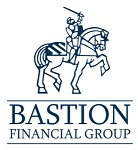It’s probably no surprise to read that the rapid Covid-19 and oil supply war share market correction has signaled the arrival of a new bear market phase. The ASX All Ordinaries Index is down 29.6% from it’s high in February 2020, the Dow Jones is down 28.8%.
Bear markets occur when prices in a market decline by more than 20%, often accompanied by negative investor sentiment and declining economic prospects. Bear markets can be cyclical or longer-term. The former lasts for several weeks or a couple of months and the latter can last for several years or even decades.
Bear markets usually follow bull markets as sure as night follows day. Each time there is a different trigger or cause for the bear market, but they usually follow a period of strong economic growth, low interest rates and excessive risk taking by investors, causing a bubble in asset prices. A bubble which is unsustainable and which eventually must burst. Usually the market corrections are fast, faster than analysts or investors can react to or try to cash out prior. The correction period can take months or years, as global economies adjust to new economic circumstances, consumers reduce spending, new government policy is legislated and enacted. In the Covid scenario there has been a consumer demand shock, a supply shock and a financial market shock. There are winning sectors of the economy (IT, online media and retail, vaccine and healthcare) and losing sectors (airlines, cruise ships, travel/leisure, oil producers) . Once the correction period plays out over time, a new low has been plumbed, the panic and forced selling has exhausted itself, markets reset for the next recovery phase. This can take weeks, months or years.
If the goal is to participate in bull market growth but minimise bear market impacts, how can we mitigate risk in investment portfolios and minimise bear market impact to wealth? Most analysts would agree it’s very difficult to pick the top and the bottom of the market, particularly on a regular basis. It is easy to reduce growth assets in a portfolio, that is one part of the decision – but at what time does one reinvest the cash back into growth assets, that is the second part of the decision, the most difficult and the most important for long term growth. Evidence confirms the risk to long term returns by switching to 100% growth or 100% defensive allocations in a portfolio by forecasting or “gut feel” can be value destroying, not to mention psychologically draining. A bear market can test the most experienced trader’s nerves and usually win. We just need to bear witness to the last few weeks of market trading experience to understand that.
One effective way to mitigate downside risk, and benefit from the inevitable recovery which follows is to use a risk profiling and asset allocation strategy. A more scientific approach whereby in bear market or bull market, an advised investment portfolio retains investment allocations to growth assets and defensive assets.

Investors have a psychological preference to increase their exposure to growth assets during a bull market, and decrease their growth assets during a bear market. Caution ! An experienced financial planner will recommend their client hold fast to their asset allocation plan for the long term, and ride out both bull and bear markets, resisting the temptation to regularly alter asset allocation. A buffer of defensive assets is retained during bull markets despite persistently low returns on cash and fixed interest. The low return on defensive assets is the “opportunity cost” paid to retain cash. When a bear market arrives the defensive component suffers minimal declines and serves as ballast to help smooth overall portfolio returns. Ballast is a heavy, high density material such as lead, placed low in the keel of a ship. Ballast in an ocean racing yacht provides sailing stability in strong winds and moment to resist the lateral forces on the sail. And – this defensive component now provides much needed cash and liquidity to fund pension payments, expenses and best of all purchases of quality growth assets which have now become very attractive in price. The opportunity cost of low return was worth it. New growth asset purchases at bargain prices can be funded by the defensive component at the appropriate time, delivering fully franked dividends and future capital growth into the portfolio when markets later recover. Often the rate of return of the future dividend flow and future capital growth more than compensates for the low interest return endured for a period of time during the final phases of the prior bull market.
Portfolios which have “drifted” during bull markets towards a higher growth allocation, and a lower asset quality often suffer the most when the bear market arrives. These portfolios may have been unadvised or poorly advised resulting in a lack of discipline towards asset allocation and asset quality. The defensive component of the portfolio was reduced at the wrong time of the cycle! As a result cash and liquidity levels required to fund pension payments, pay expenses, lower portfolio risk, and fund attractive new growth asset purchases is minimal. Growth assets must be sold down to create cash, after a correction, at the worst time possible often at fire sale prices, causing erosion of capital. Now the investor is less likely to be ready or have the cash funds necessary to fund new purchases of cheap growth assets at the appropriate time prior to the recovery phase.
It all sounds so simple, but it’s not, because human psychology, media articles, uncertainty, x-factors, politics, fear and greed all interfere with the science of long-term investing.
Three phases of Portfolio Management using asset allocation strategy;
- Bull market phase, maintain defensive asset allocations
- Bear market correction phase, risk management, active research, defensive component provides liquidity
- Recovery phase, defensive component funds prudent growth asset purchases
At Bastion Financial Group we utilise asset allocation, extensive research, education and decades of experience to help clients minimize the risk and stress of managing wealth. We advise on portfolios of value above $1m held by families and business owners. We are Certified Financial Planners (CFP), Members of the Financial Planning Association of Australia (FPA) and uphold the FPA Code of Professional Practice. We welcome new enquiries for advice and offer an S.O.S. (second opinion service) quick assessment via email or a brief initial phone call appointment.
David Benney CFP
Financial Planner/ Director
David@bastionfinancialgroup.com.au
Important information
This article has been prepared by Bastion Financial Group Pty Ltd., Authorised Representative(s) of Godfrey Pembroke Group (ABN 38 078 629 973), an Australian Financial Services Licensee, registered office at Level 2, 26 Brisbane Avenue, Barton ACT 2600.
Any advice in this document is of a general nature only and has not been tailored to your personal circumstances. Accordingly, reliance should not be placed on the information contained in this document as the basis for making any financial investment, insurance or other decision. Please seek personal financial, tax and legal advice prior to acting on this information.
Opinions constitute our judgement at the time of issue and are subject to change. No member of the Godfrey Pembroke Group, nor their employees or directors, gives any warranty of accuracy, nor accepts any responsibility for errors or omissions in this document.




